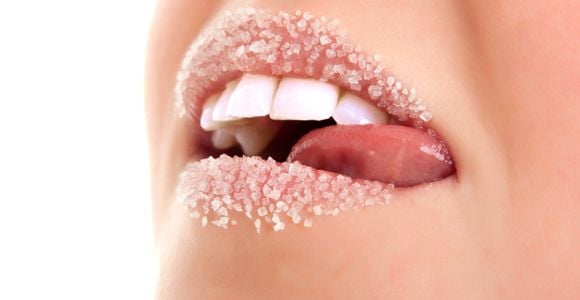Have you ever been told that you have a sweet tooth? Do you ever daydream about candy, cookies, cake, ice cream, donuts or all things chocolate? If this sounds like you, you may be consuming more added sugar than you need. But even if you are not a sweets fanatic, your diet may still have more added sugar than you think.
Of course, some healthy foods naturally contain sugars--including fruits, dairy, whole-grains and vegetables. However, when I mention "added sugars," I'm referring to sugars that manufacturers add during processing. Additionally, sugar has become such a prevalent ingredient in our food supply that it's often added to foods that we don't realize. For example, sugar is added to non-sugary foods such as hummus, breads and soups. Why is too much added sugar bad for our health? It can contribute to weight gain, high triglycerides (fat in your blood and tissues that can increase your risk for heart disease) and dental cavities.
Even condiments are actually quite high in sugar. Shockingly, a single tablespoon of ketchup contains a teaspoon of sugar and we often use much more than a tablespoon of the stuff. Other common condiments and sauces, such as barbeque sauce, teriyaki sauce, chili sauce, marinades, jams and jellies, pasta and pizza sauces and salad dressings, have a great deal of added sugar.
Although a diet completely void of added sugar is nearly impossible, there are definitely ways to reduce your added sugar intake. With a few simple steps, you can reduce the sugar in your diet.
1. Check the Ingredient List
Because some foods will contain natural sugars, you can't always tell from the grams of sugar if the product contains natural sugar or added sugar. If you see the words "sugar," "dextrose," "fructose," "maltose," "sucrose," "glucose," "cane syrup," "cane juice," "corn syrup," "fruit juice concentrate," "honey," "molasses," "brown sugar" or "malt syrup," you'll know sugar has been added.
2. Be Conscious of Condiments
Check the nutrition facts panel to see how much sugar it contains. Generally, your best bets for low-sugar condiments include mustard (yellow and Dijon are low in sugar, but watch out for honey mustards), light mayonnaise, hot sauce, fat-free plain Greek yogurt in place of sour cream, fresh salsa (not jarred), horseradish and dill pickle relish. You can also add a ton of sugar-free, low-calorie flavor with vinegars.
3. Be Wary of Flavored Yogurts
We know yogurt is chock-full of calcium, protein and tummy-taming probiotics, but it can also sneak in a substantial amount of sugar. In fact, some single-serving containers of yogurt contain more sugar than a 12-ounce can of soda. All yogurts have some naturally-occurring sugar from lactose, but if your yogurt contains more than 12 grams of sugar, you can bet added sugars are to blame. Seek out varieties with about 12 to 15 grams of sugar or less.
4. Choose Sugar-Free Beverages
We often don't think about the amount of calories and sugar in beverages because they're not solid "foods." However, according to recent research, beverages contribute about one-third of our daily calories from added sugars.
5. Choose Lower-Sugar Desserts
If you're going to eat dessert, opt for fruit (fresh, frozen, or canned in its own juices) or a sugar-free option, such as sugar-free jello or pudding.
6. If You're Craving Candy or Something Sweet to Munch On
Reach for a piece of sugarless chewing gum. A piece of sugarless gum usually has about five calories and doesn't promote tooth decay. In fact, it's been shown to improve oral health because it stimulates saliva production, reducing the risk of dental cavities.
7. Choose Low-Sugar Cereals
Cereals, regardless of their other beneficial nutrients, often contain a lot of added sugar. One particularly naughty offender: granola. Sure, it contains oats (loaded with vitamins, minerals and fiber) but it also houses a load of sugar. You're better off making oatmeal from regular oats to get all the fiber without the added sugar.
8. And Lastly: Choose the Right Bread
Choose breads that contain little added sugar. Breads often add more sugar than necessary. 
Kari Hartel, RD, LD is a Registered, Licensed Dietitian and freelance writer based out of St. Louis, MO. Kari is passionate about nutrition education and the prevention of chronic disease through a healthy diet and active lifestyle. Kari holds a Bachelor of Science in Dietetics from Southeast Missouri State University and is committed to helping people lead healthy lives. She completed a yearlong dietetic internship at OSF St. Francis Medical Center in Peoria, IL, where she worked with a multitude of clients and patients with complicated diagnoses. She planned, marketed, and implemented nutrition education programs and cooking demonstrations for the general public as well as for special populations, including patients with cancer, heart disease, diabetes, Alzheimer's disease, obesity, and school-aged children. Contact Kari at [email protected].



